

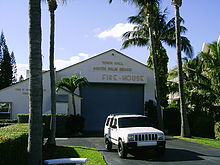
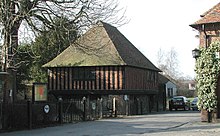
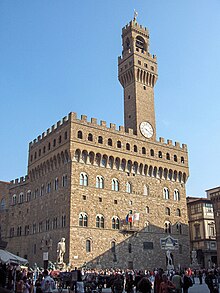
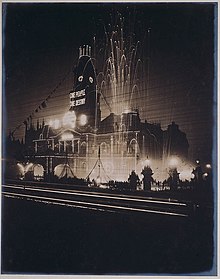
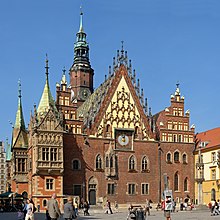

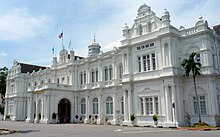


In local government, a city hall, town hall, civic centre (in the UK or Australia), guildhall, or municipal building (in the Philippines) is the chief administrative building of a city,[5] town, or other municipality. It usually houses the city or town council and at least some other arms of the local government. It also often functions as the office of the mayor (or other executive), if the relevant municipality has such an officer. In large cities, the local government is often administratively expansive, and the city hall may bear more resemblance to a municipal capitol building.
By convention, until the middle of the 19th century, a single large open chamber (or "hall") formed an integral part of the building housing the council and such other organs of government as supported it. The hall may be used for council meetings and other significant events. This large chamber, the "town hall" (and its later variant "city hall") became synonymous with the whole building, and, synecdochically, the municipal government headquartered there. The terms "council chambers", "municipal building" or variants may be used locally in preference to "town hall" if no such large hall is present within the building.
The local government may endeavor to use the building to promote and enhance the quality of life of the community. In many cases, "town halls" serve not only as buildings for government functions, but also have facilities for various civic and cultural activities. These may include art shows, stage performances, exhibits, and festivals. Modern town halls or "civic centres" are often designed with a great variety and flexibility of purpose in mind. In some European countries, the town hall is the venue for the declaration of Christmas Peace, such as Turku and Porvoo in Finland[6] and Tartu in Estonia.[7]
As symbols of local government, city, and town halls have distinctive architecture, and the buildings may have great historical significance – for example the Guildhall, London. City hall buildings may also serve as cultural icons that symbolize their cities. City Hall buildings often serve citizens in accessing government functions as well as providing vital symbolic roles for their communities.[8]
- ^ Falconi, Fabrizio (2015). Roma segreta e misteriosa (in Italian). Newton Compton Editori. ISBN 9788854188075. Retrieved 19 August 2019.
- ^ Grynbaum, Michael M. (24 May 2012). "The Reporters of City Hall Return to Their Old Perch". The New York Times. Retrieved 6 December 2013.
- ^ "Town of South Palm Beach - Town Hall's Current Condition" (PDF). southpalmbeach.com. 4 May 2022. Retrieved 7 November 2024.
- ^ "Wrocław – Old Town Hall". medievalheritage.eu. Retrieved 7 November 2024.
- ^ "Definition - city hall (noun)". merriam-webster.com. 2010. Retrieved 7 November 2024.
1: the chief administrative building of a city
2 a: a municipal government
b: city officialdom or bureaucracy - ^ "Christmas in Porvoo". visitporvoo.fi. Archived from the original on 29 September 2020. Retrieved 30 January 2021.
- ^ "Kahjumis Uppsala Maja viskab voodid välja". tartupostimees.ee (in Estonian). 28 April 2010. Retrieved 7 November 2024.
- ^ Friedrich, Anna Sellers (August 2020). "The Essential Business of City Hall". Places Journal. Retrieved 7 November 2024.